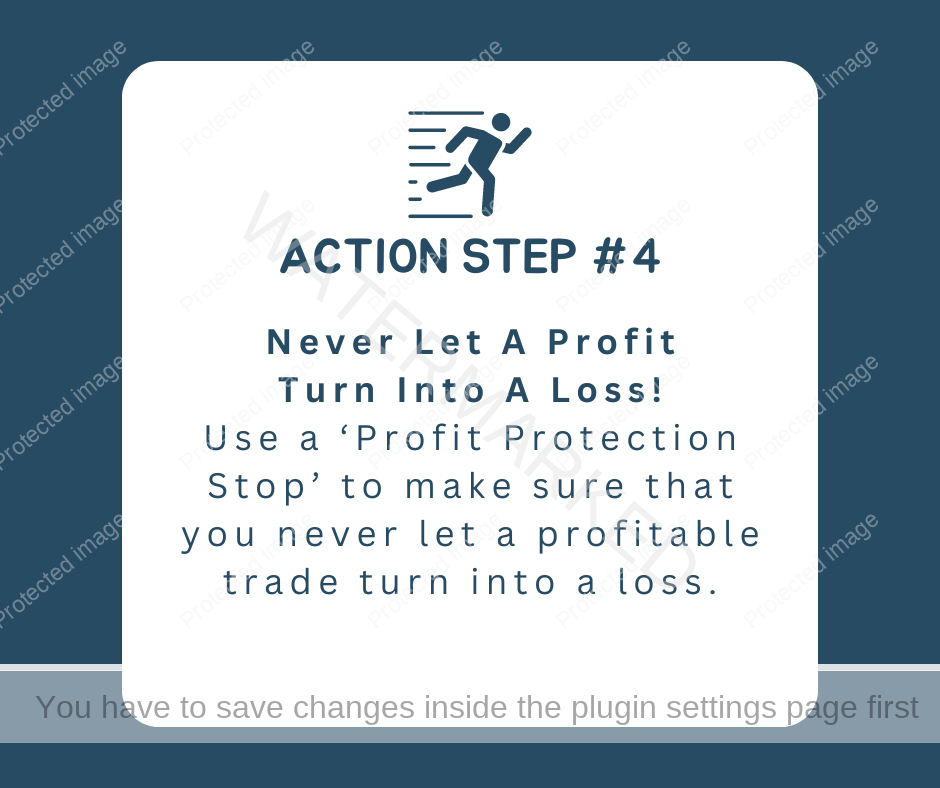
Remember Step 2 “Cut the Losers with Stops”? Of course you’ll remember how we talked about using ‘Stops’ to make sure that any of our losses remained small losses.
Well now we’ll let you in on another secret. You can use stops to protect profits just the same way we talk about using them to protect our capital.
Let me explain what we are talking about.
Imagine that you had bought 1,000 shares in a company for $3.00.
Now imagine that you had set your stop loss at $2.85, which is equal to a 5% loss. Therefore, if the shares you bought at $3.00 go down below $2.85 you will get out immediately.
Being smart you have also set your profit target at 50%, which means you are going to sell the shares when it gets to $4.50 and get out with a handsome profit.

Since you bought the shares, the price of the stock has gone up to $4.00. This means that you now have an unrealised profit of $1,000. Not bad! But it also means that you now have a problem.
Should you wait for the shares to go to your profit target before you sell them? What if they never get to $4.50 and instead go down to $2.85 where your stop is? That would mean that you would lose the unrealised profit of
$1,000 that you currently have and make a small loss on the trade.
The answer is to use a different type of stop, a ‘Profit Protection Stop’ to make sure that we never let a profitable trade turn into a loss.

The Profit Protection Stop
So how does it work? Although it might seem complicated, it’s actually quite simple.
If you take a trade and you find that prices move in your favour you will start to have an unrealised profit.
What you should do now is to set a limit on the amount of the unrealised profit that you are prepared to lose. This will depend on your plan and the stocks that you are trading but we’ll use 20% for our example.
In other words, we never want our unrealised profit to decrease by more than 20%. If it does, we will sell the stock and take the 80% of our unrealised profit.
Let’s go back to our earlier example. If our unrealised profit is $1,000 then what we are saying is that if prices go down such that our unrealised profit is less than $800 we should sell our shares and keep the $800. We don’t want to hang around to find out if the market will turn around and go back up to our profit target or if it will keep going down.
What this means is that every time the stock that you are holding goes up and gives you a greater unrealised profit, then you have to work out what 80% of your unrealised profit is and set a new level as to where you will get out.
As prices continue to move in your favour, the unrealised profit will grow and you have to protect it. Take this as seriously as if it were real money and continue to apply the profit protection rule.
When you hold a share, you can keep your stops in one place or raise them but never lower them. Giving extra slack to a losing trade is a loser’s game. If a trade is not working, regardless of the reason, it means it’s time to get out.
Using this strategy requires a little more work because you may have to adjust the stops each day but the results can be well worth the effort.